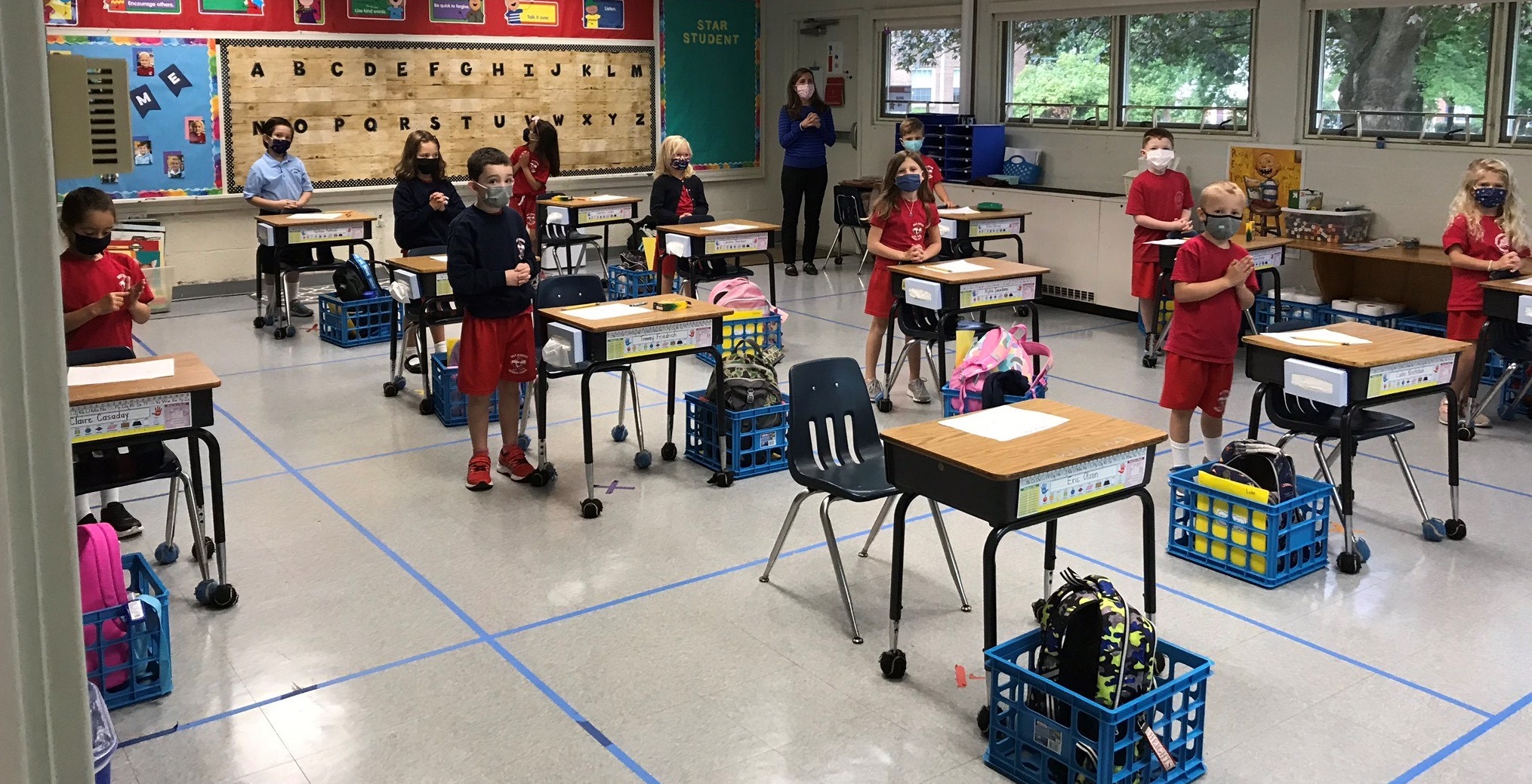After a teacher and student at Holy Redeemer Catholic School in Kensington, Maryland, tested positive for COVD-19 in the first week of September 2020, school officials there immediately implemented a plan to have students in the affected class go into quarantine and move from in-person to virtual learning for a two-week period.
“Before school even started we expected the best and prepared for the worst,” said Tommy Corrigan, principal of Holy Redeemer Catholic School. “If something was going to happen, we knew we would not panic, but we would be prepared.”
Because of the contingency plan the school already in place, Holy Redeemer students lost no education time as the situation was addressed. Approximately 375 pre-kindergarten through eighth-grade students attend the Montgomery County Catholic school.
“We were prepared to go into virtual learning, and our teachers prepared students for virtual learning should it happen,” Corrigan said. “All classes have web cams and Zoom accounts ready to go. The transition from having the class in person to virtual learning was not a problem.”
Corrigan said that once he learned on Labor Day that his school had a confirmed COVID case, “I immediately contacted the (Archdiocese of Washington) Catholic Schools Office, and we got in touch with the (Montgomery County) Health Department, and from there they walked us through” what needed to be done. “They were very helpful,” he added.
He said that due to safety precautions already in place at the school, only the affected class had to go into quarantine. “Because of the way our protocols were being done, the rest of the school would not have to be quarantined,” Corrigan said.
Those protocols include students directly entering their classroom from an exterior door and not using the hallway unless to use the restroom; requiring the use of face masks at all times; classrooms prominently marked with six-foot social distance parameters; larger classes using the school gymnasium and a modular trailer in order to guarantee appropriate social distancing; special subject teachers rotating to students’ classrooms so that students do not have to change and share classrooms; and splitting the rather large kindergarten class into four separate classes.


“Really, the only thing we had to do differently is have that class quarantined,” Corrigan explained. “A cleaning crew came in and used a fog machine that sanitizes. We did go through and clean everything (and not just the affected classroom) just to be thorough.”
Both the student and teacher made a full recovery and they along with the other students in the affected class returned to school Sept. 21.
Corrigan said that once the school community was alerted to the situation, “there was certainly some concern among parents, but I assured them we are taking the proper precautions.”
“Things didn’t get crazy with parents, and there was no mania because of the open communication we had. We just kept everyone informed of what was going on,” he said. “Communication with the community was key – we were being upfront without invading the privacy” of the affected student and teacher.
The principal also noted that “another reason for how this turned out successful is the cooperation and courage of the teachers and the support of the parents. Their flexibility and commitment to the school made this an easier process.”
He also thanked Father Mark Hughes, pastor of Holy Redeemer Parish, because “he had confidence in our plans and protocols – and it was nice to have that support.”
Holy Redeemer School still has students who are learning virtually, and Corrigan said they will return to in-person instruction the first week of October.
“This made us stronger, and is proof that our plans and protocols work,” Corrigan said. “We are confident. Of course, we know that should this happen again, each case will be different and will be treated differently, but we know we will do the right thing whatever that may be.”









